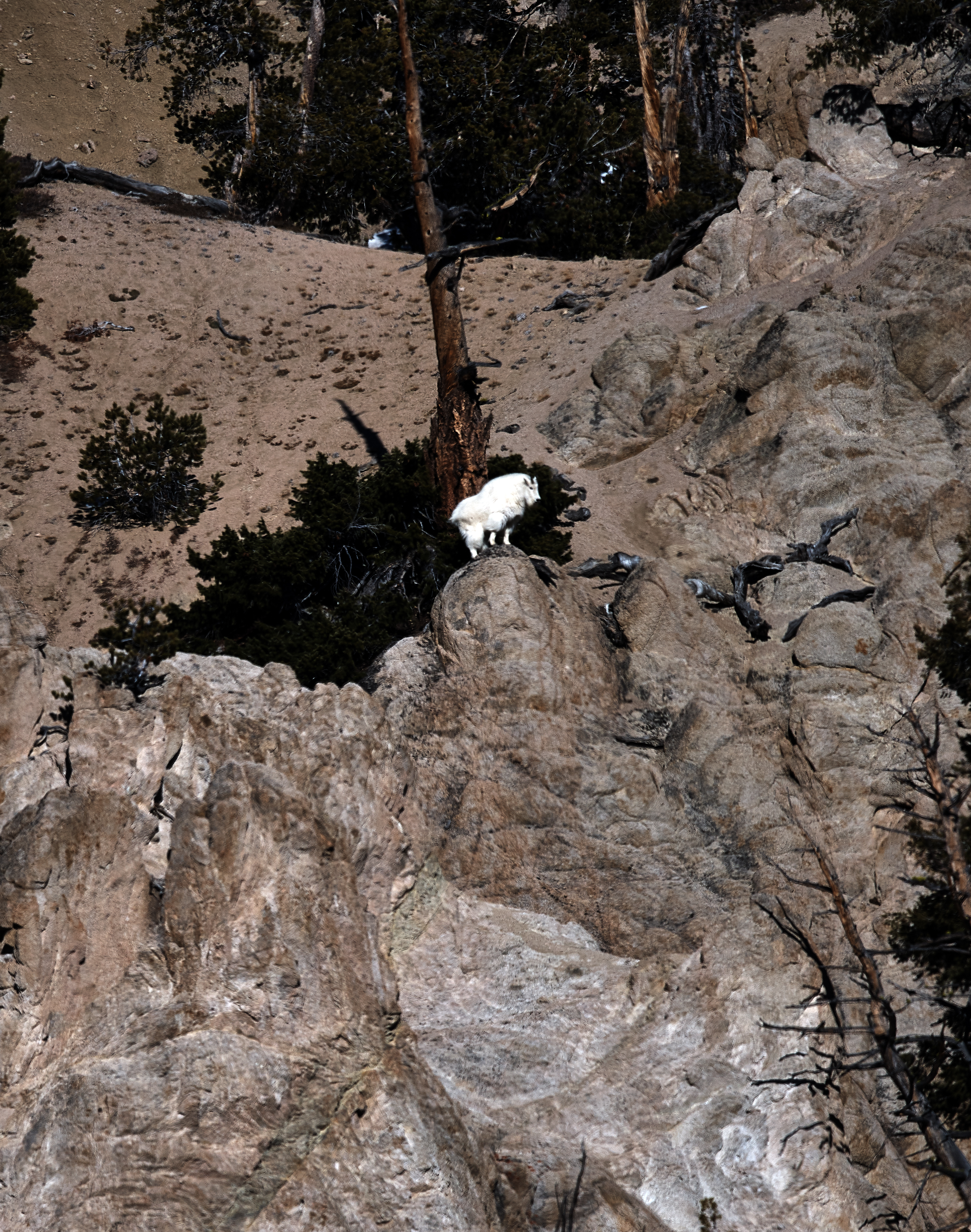By Wood River Valley standards it is late fall. Sun Valley is making snow on Baldy and Dollar Mountain. Because it has been cold and clear – there is a great deal of snow on the ski mountains. There has not been much precipitation otherwise. So I decided to head up high into the Hemingway-Boulder Wilderness for the afternoon into the Garden District. I call it that because the area has The Rock Garden and The Secret Garden. My buddy Nappy Neaman established the names. Each Garden is home to the Mountain Goats of the Wood River Valley. Fellow back-country explorer Crist Cook and I performed a bit of reconnaissance yesterday; to establish light patterns and snow levels. We determined I would be good to go; up into peaks above the valley floor. My goal was to grab some shots of goats and capture a sunset shot of the Garden District.
The mornings have been chilly – 11 degrees at the house on this day. The temperatures got up into the mid 30’s in Ketchum during the day. The temperatures at 9-10 thousand feet north of town, including the Garden District peaked in the mid 20’s. Seeing it was cold and I was staying through sunset – I brought all kinds of clothing layers, energy bars, water and head lamp. Kyle (my son and co-owner of MESH Art and MESH Art at Heritage Hall ©) had me pack some hand-warmers and a hot thermos of coffee. The ascent into the Garden District is a solid challenge. The travel is all off-trail that includes tall Sage Brush and a fair amount of scrambling. We (actually Nappy) have five primary spots to look for Goats in the Garden District. I decided to journey up to the mid-point. This effort involves dealing with two steep sections in just a few miles of cross-country travel. Travel for me on this day includes lugging up a 1,000 MM lens in addition to a 50MM and 200MM.
Notes on the Goats (aka things I learned from Nappy): The mountain goat (Oreamnos americanus), lives only in northwestern North America, and is the only genus and species of its kind in the world. Its closest relatives are the chamois of Europe and the goral and serow of Asia. The domestic goat is not closely related to the mountain goat. The Mountain Goats of the Wood River Valley live at the very south-end of its native geographic range. The Mountain Goats of Utah, Colorado, and even Glacier National Park are non-native transplants.
At birth, young goats or kids stand about 13 inches at the shoulder and weigh 5 to 7 pounds. Yearlings may average about 45 pounds and 2-year-olds about 55 pounds. Mountain goats continue to grow through their fourth year achieving average weights of 125 to 155 pounds for females and 135 to 180 pounds for males.
The breeding season occurs from mid-November through early December. Females (or nannies) do not breed until at least 2.5 years of age. After a gestation period of 6 months, kids are born in late May or early June and closely follow their mothers for the first year. Adult females rank highest in the social order. By association, kids also assume the superior status of their mothers who vigorously defend them until they are yearlings. Yearlings drop to the bottom of the social order and are forced to forage last in areas pawed out by other goats. Kid and yearling survival may be less than 50 percent depending upon the severity of the winter. If a goat survives weather, falls, and predation by cougars, eagles and other predators during its juvenile years, longevity is normally 10 to 13 years.
Female-juvenile (nursery) groups range in size from two to well over a dozen mountain goats, with some groups up to 70 animals. Large groups generally occur during early summer when goats congregate on prime feeding grounds or at mineral licks. As the summer progresses and the vegetation dries out, group size diminishes.
By the age of two, males or billies begin to disassociate themselves from nursery groups. Outside of the mating season, males tend to associate primarily with other males. Females normally inhabit the most desirable cliffs which are also often more visible and accessible than areas frequented by males. From late October to mid-December, males seek out females, so both sexes can be found together at this time of year.
Below are images from today’s adventure.



Need to find effective online marketing that isn’t completely full of it? Sorry to bug you on your contact form but actually that was the whole point. We can send your ad text to websites through their contact forms just like you’re getting this note right now. You can specify targets by keyword or just fire off mass blasts to websites in the location of your choice. So let’s say you would like to send a message to all the web developers in the United States, we’ll grab websites for only those and post your promo to them. Providing you’re promoting a product or service that’s relevant to that niche then your business will get an awesome result!
Send a quick message to muhammad2435tay@gmail.com to find out more info and pricing
Everyone is always talking about improving your SEO and leads but the problem is that nobody is willing to prove to you that they’re better than the other 6 million SEO companies out there. Well guess what.. we are! We’ll provide a FREE SAMPLE of our services so you can try us out before you pay anything. Email me here for more details about my offer: debbiesilver2112@gmail.com
Ever tried to create Voice-overs for your videos? You’ve likely discovered: Freelance Voice-over Artists are expensive It can take days for them to deliver ’Text To Speech’ sounds like a lifeless Robot – not anymore!. For a free demo. Send a reply to this email: nancyfadodd@gmail.com